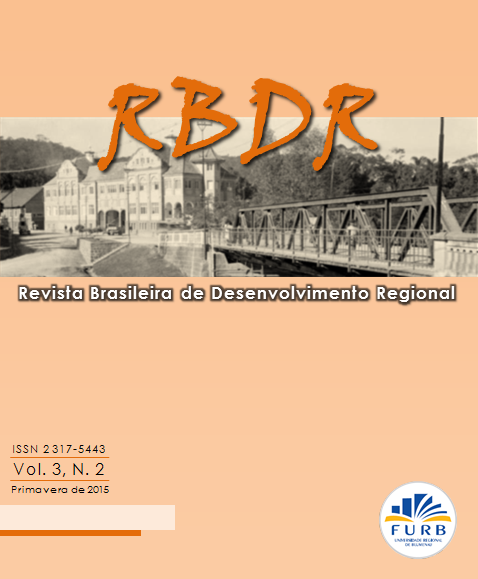The brazilian midwest and its economic transformations from 1970 to 2012
DOI:
https://doi.org/10.7867/2317-5443.2015v3n2p033-054Keywords:
Agroindustry, economic transformations, Midwest, production dynamics, regional development.Abstract
The Midwest is the Brazilian region comprising the Central Highlands in the Country. It is the second least populated region of Brazil. Its vegetation is predominantly composed of the Cerrado ecosystem and the region holds important fresh water reserve and focuses the headwaters of rivers belonging to the main river basins of South America. Politically, the Midwest is the seat of the national political administrative decisions, housing the Federal District. Economically, after the decline of mining, the region configured as ranching and extensive agriculture. More recently, it has become the major grain producer in Brazil and home to several agribusinesses, besides some considerable experiences in middle-high technology industries. This period of transformation in the region began by advancing of the São Paulo coffee economy, which needed to incorporate new areas to open new penetration routes. The economic occupation gave it specific condition in the territorial labor division, as food and raw materials producer to populations and Southeast industries. This whole process is discussed in this article, which describes in the final session, information obtained in field research and performs a general analysis of the demographic change process of the target area, revealing the differences among each states.
JEL-Code | J43; O18; Q13.
Downloads
Downloads
Published
How to Cite
Issue
Section
License
Os direitos autorais para textos publicados na Revista Brasileira de Desenvolvimento Regional são do(a) autor(a) e co-autor(a/es), com direitos de primeira publicação para a revista. Por aparecerem neste periódico de acesso público, os textos são de uso gratuito, com atribuições próprias, em aplicações educacionais e não-comerciais. A RBDR permitirá o uso dos textos publicados para fins não-comerciais, incluindo o direito de envio para bases de dados de acesso público. Os textos publicados são de integral e exclusiva responsabilidade do(a) autor(a) e co-autor(a/es).
• O(a) autor(a) e co-autor(a/es) autoriza(m) a publicação do texto na revista;
• O(a) autor(a) e co-autor(a/es) garante(m) que a contribuição é original e inédita, e que ela não se encontra em avaliação em outra(s) revista(s);
• A revista não se responsabiliza pelas opiniões, ideias e conceitos emitidos nos textos, por serem de inteira responsabilidade do(a) autor(a) e co-autor(a/es);
• É reservado aos editores o direito de promover ajustes textuais e de adequação do texto às normas de publicação;
• O(a) autor(a) e co-autor(a/es) declaram que o texto não é objeto de quaisquer conflitos de interesse.



